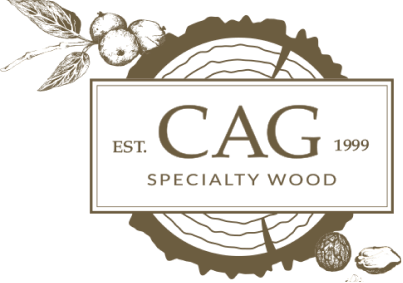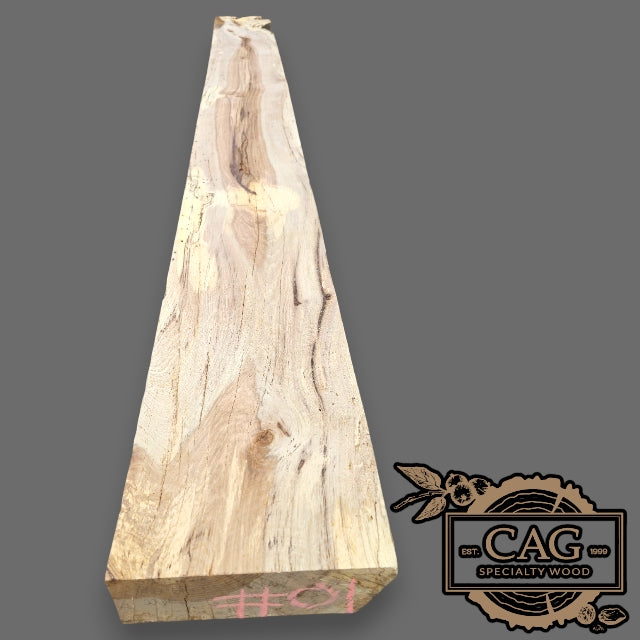
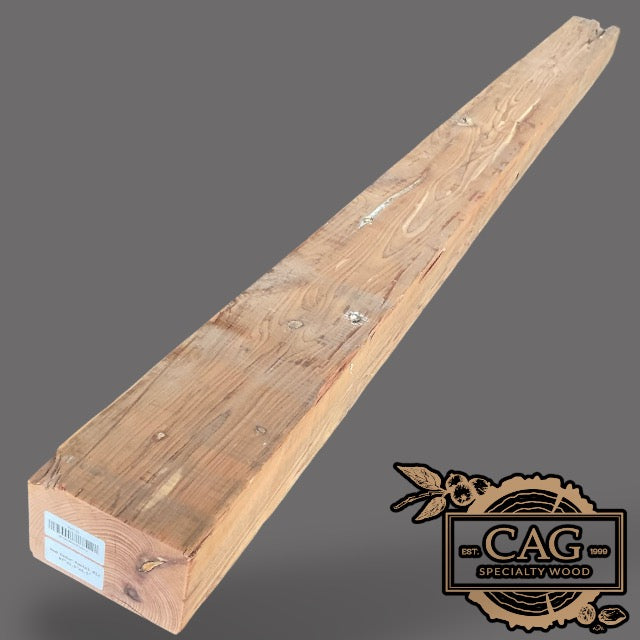
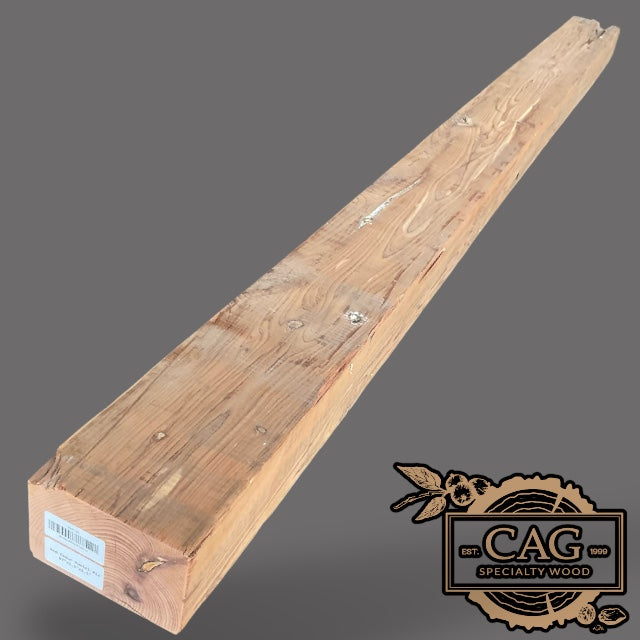
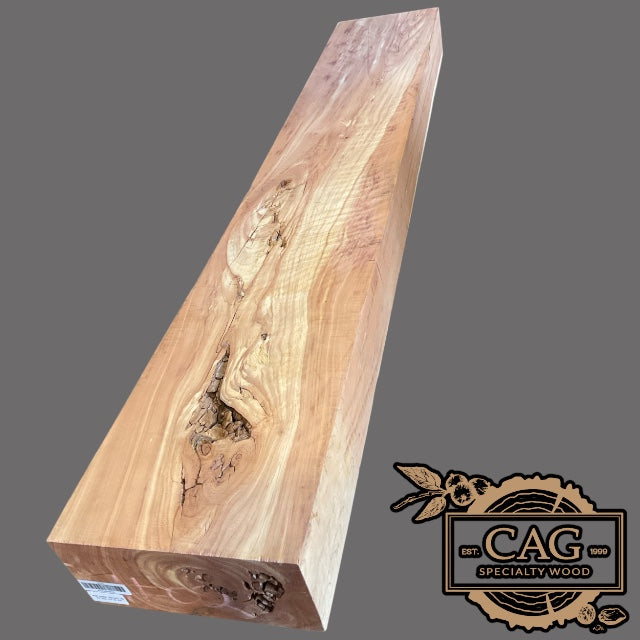
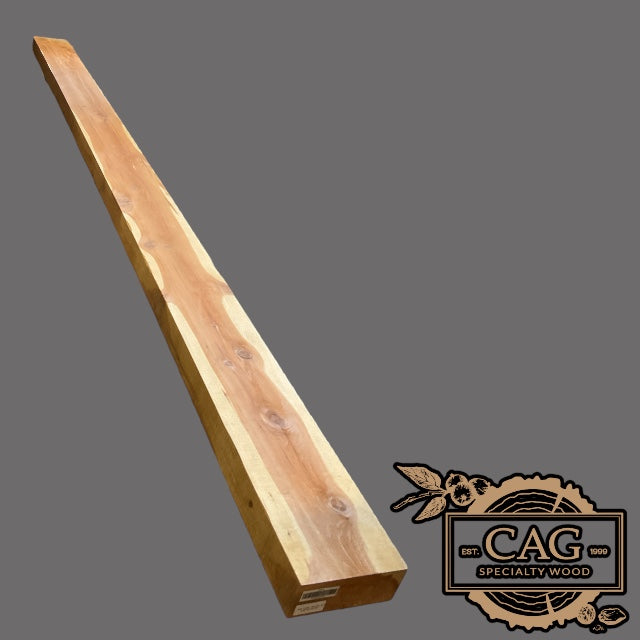
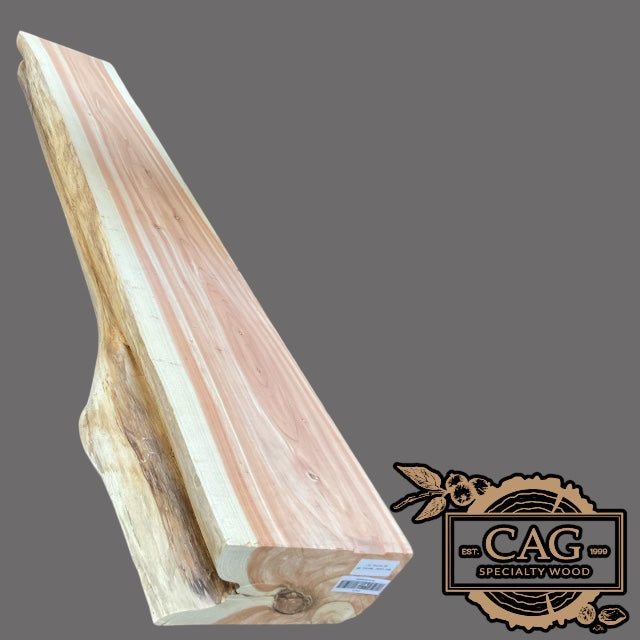
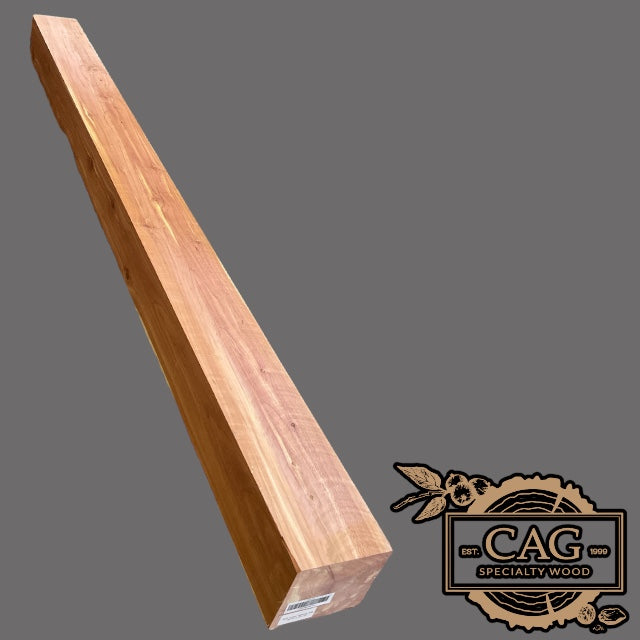

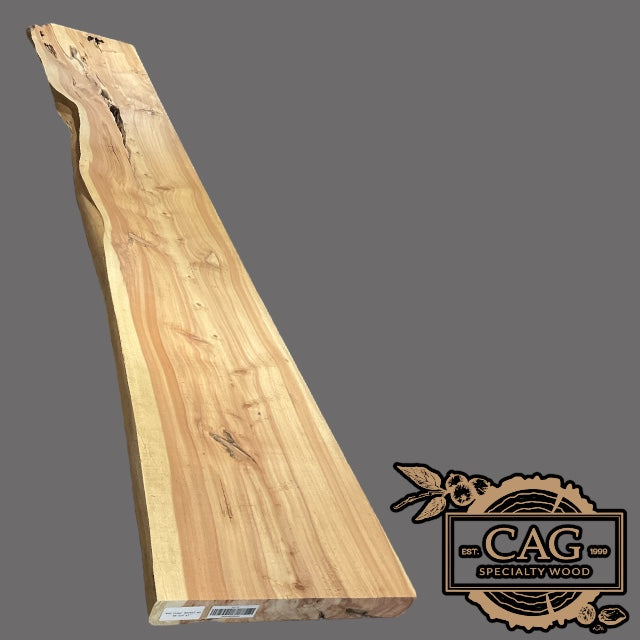
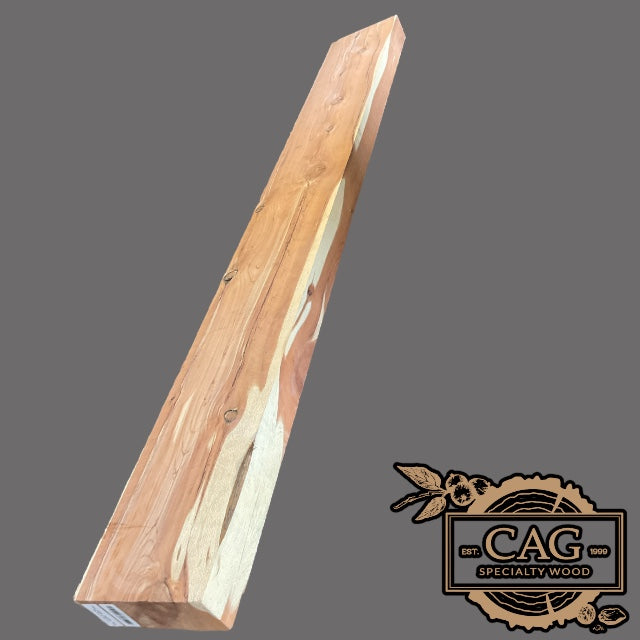
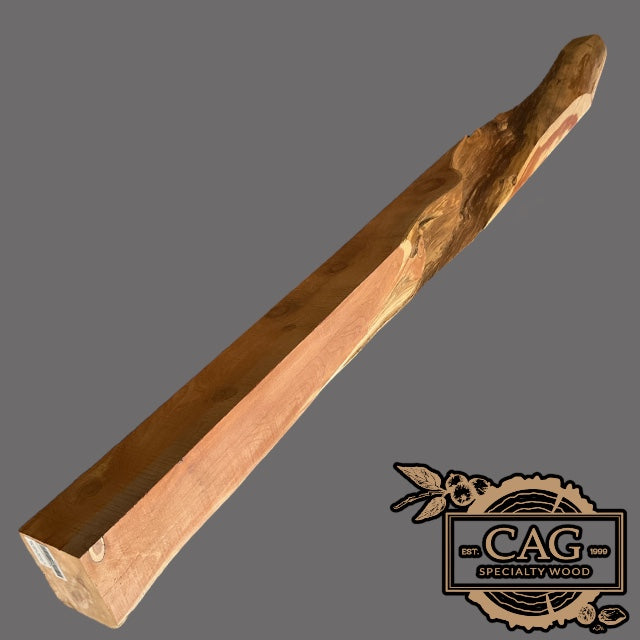

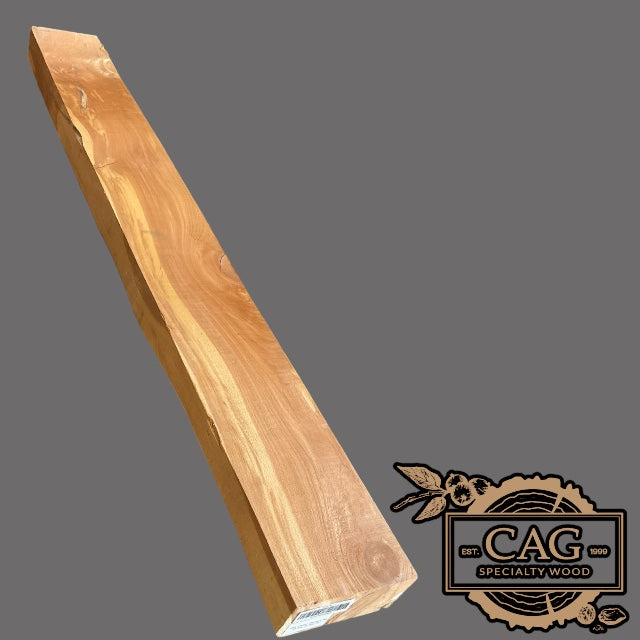
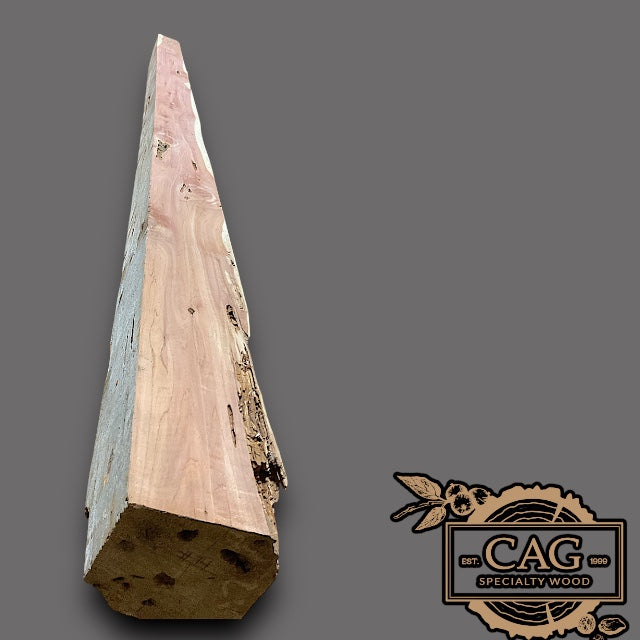
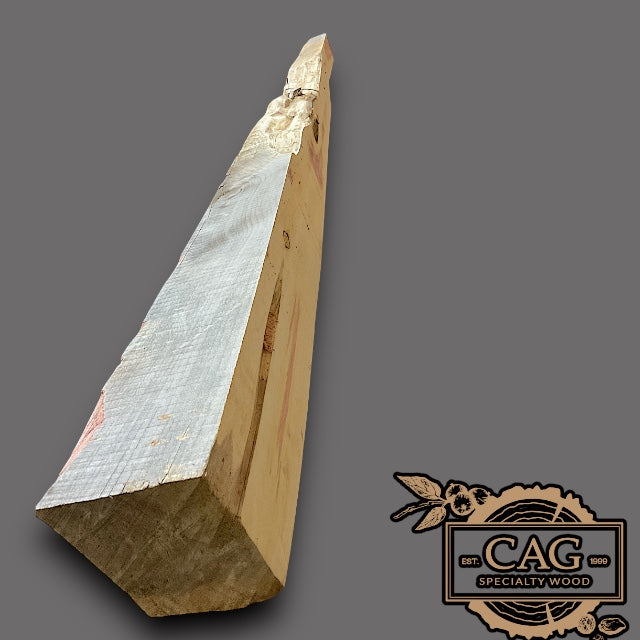
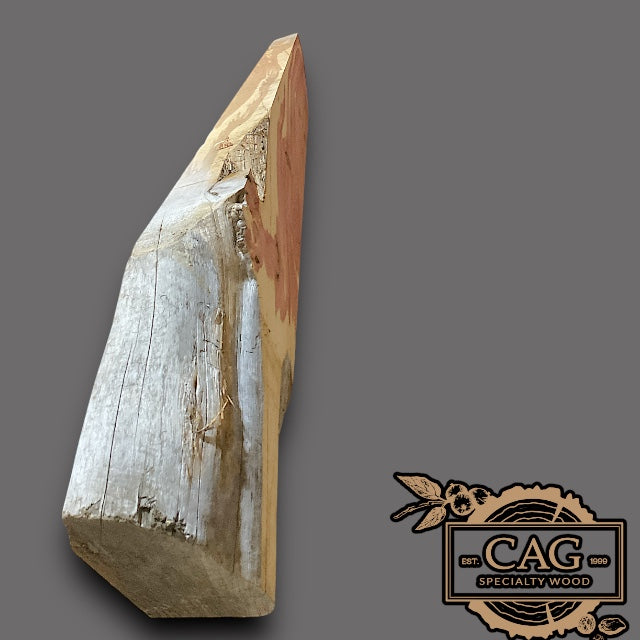
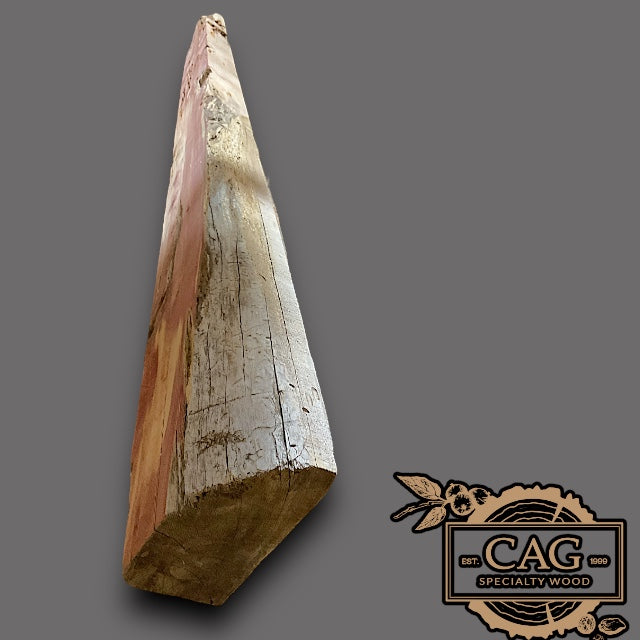
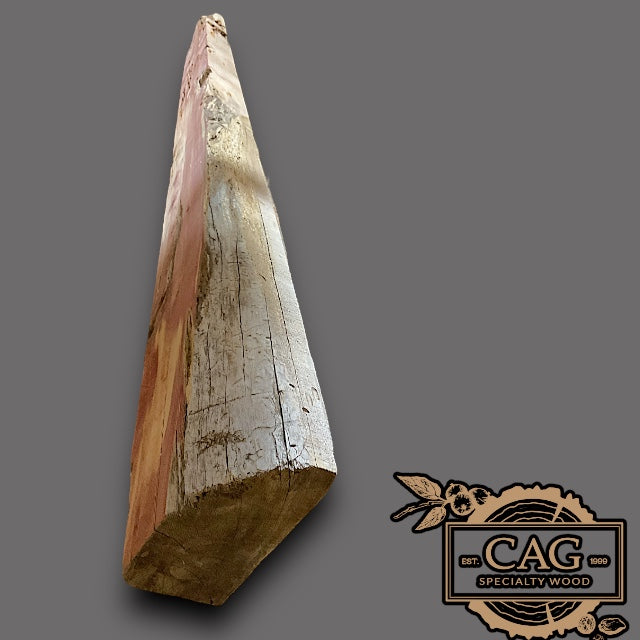
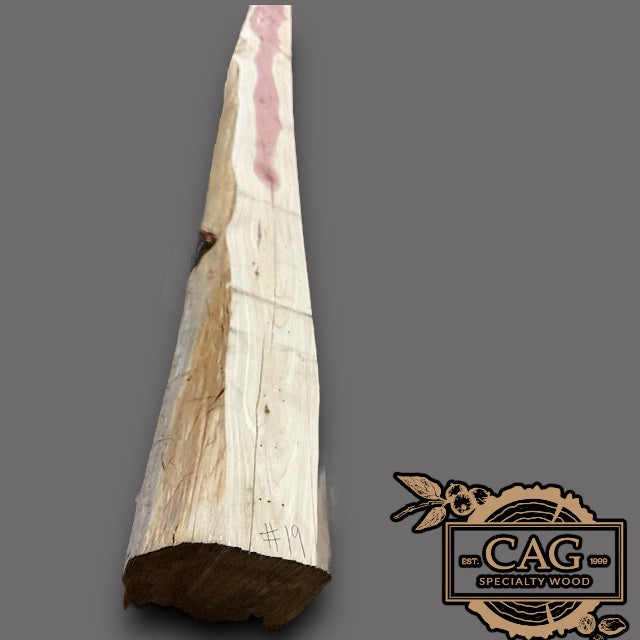
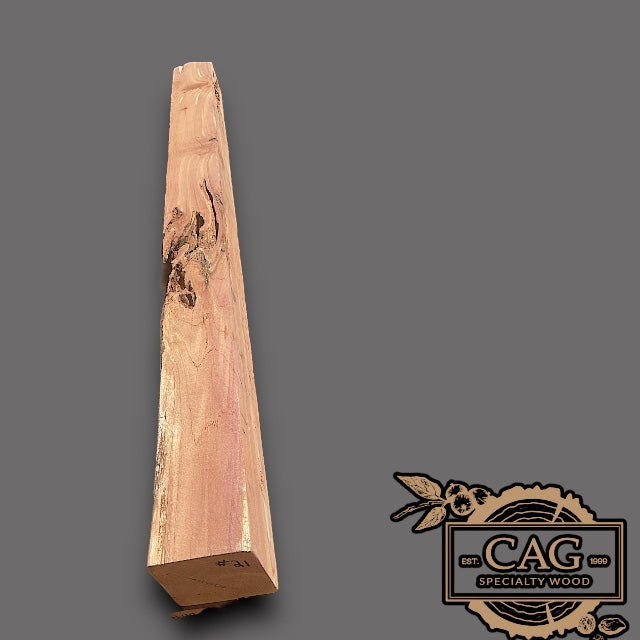
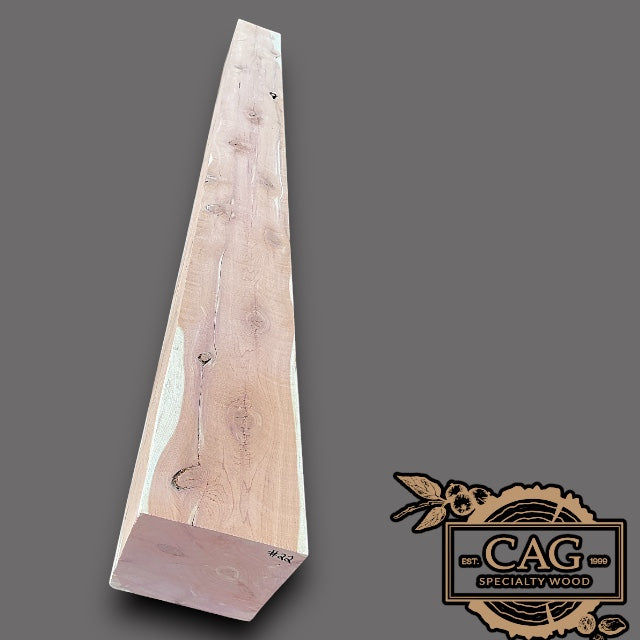
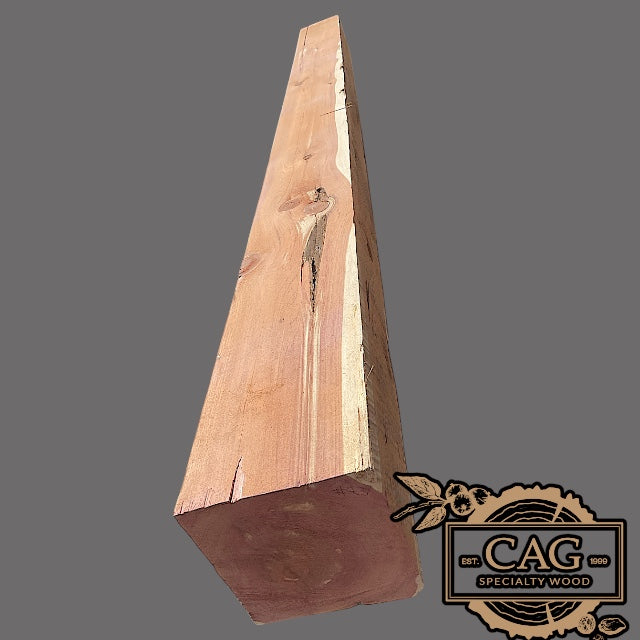
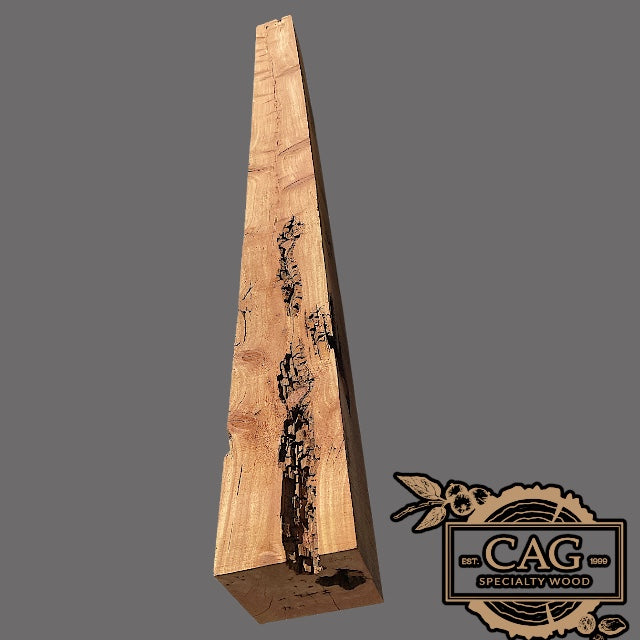
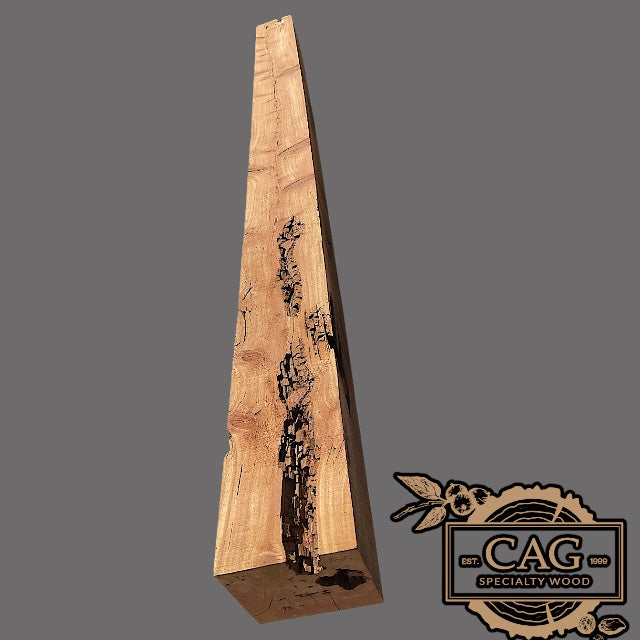
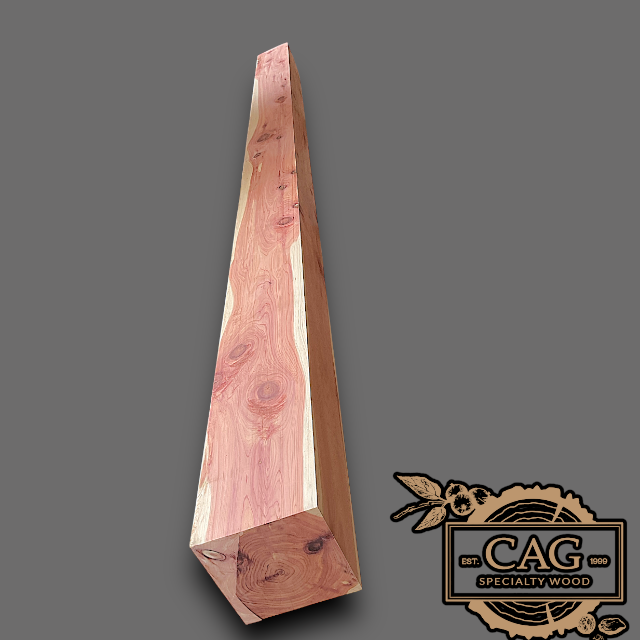
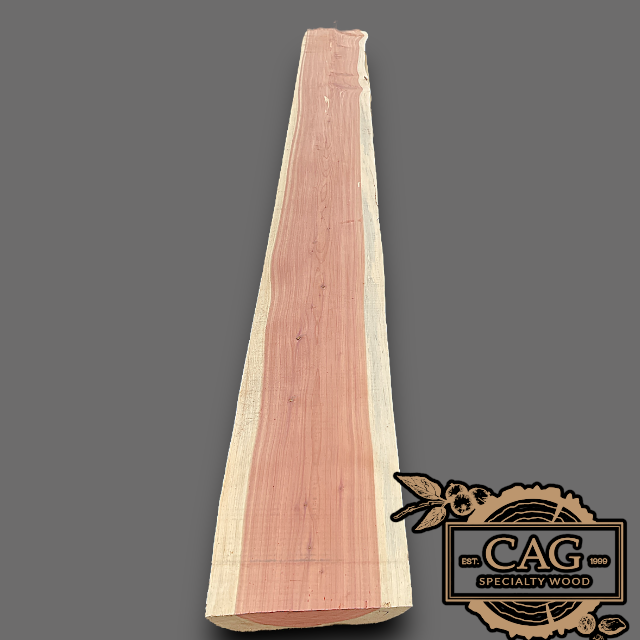
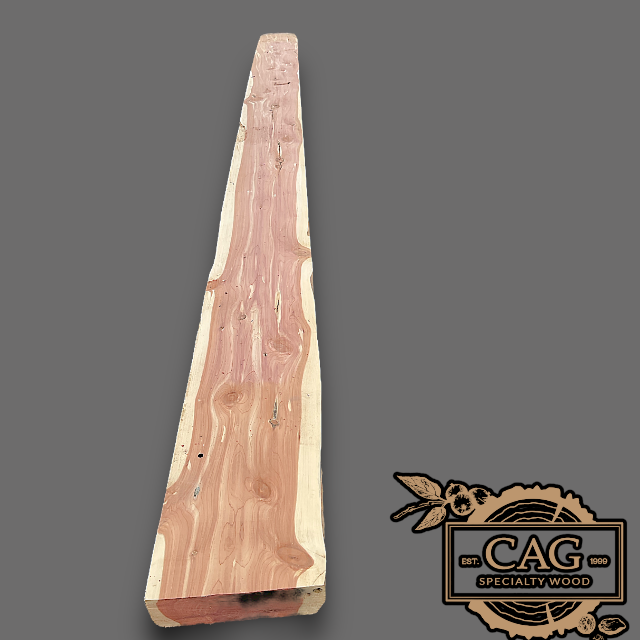
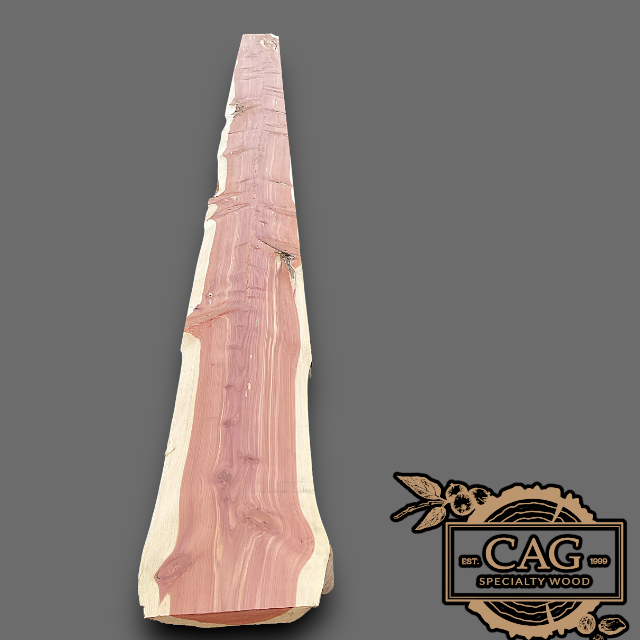
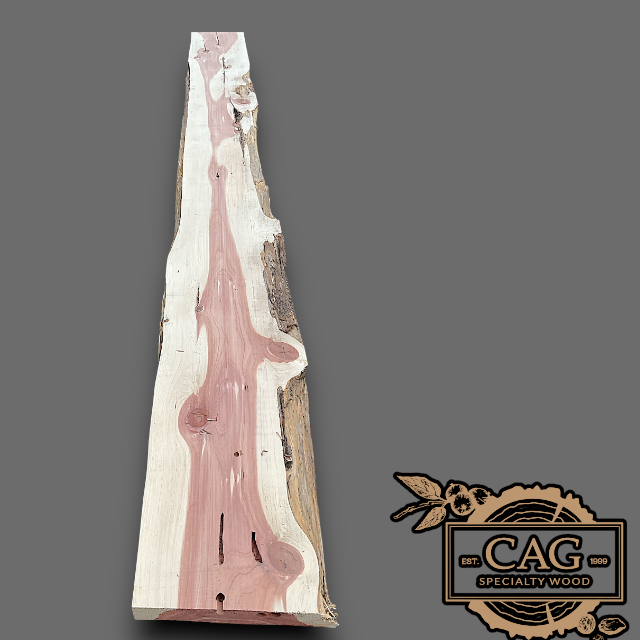
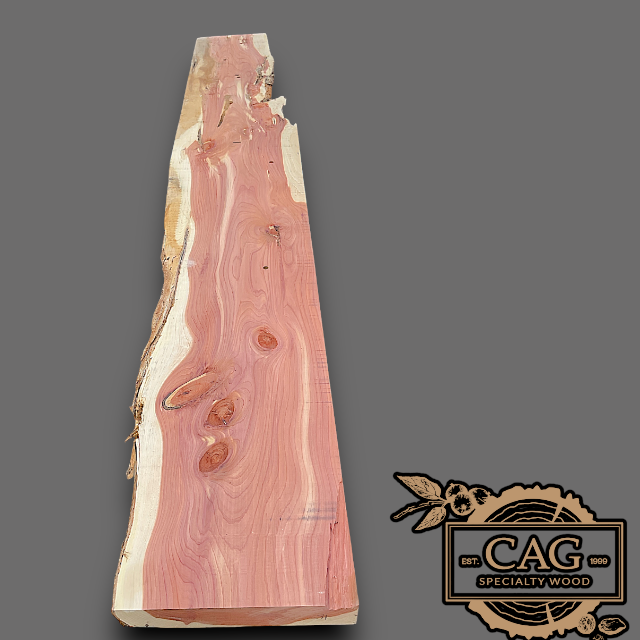
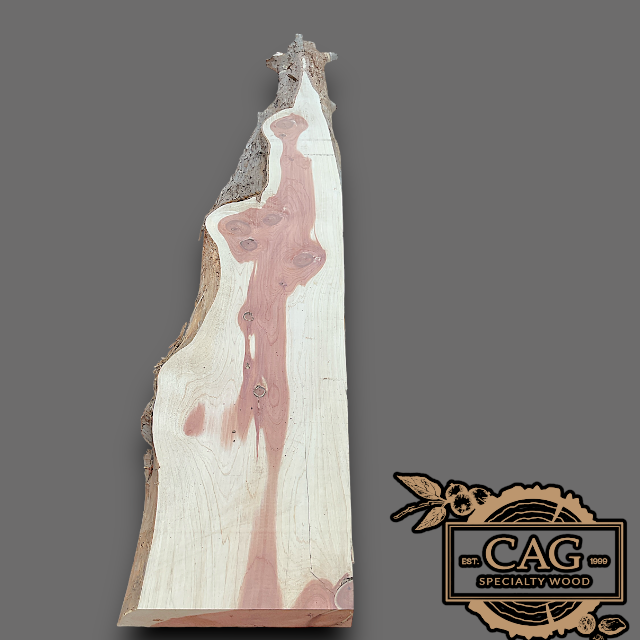
Cedar Mantels
|
Common Name(s): Aromatic Red Cedar, Eastern Redcedar Scientific Name: Juniperus virginiana Distribution: Eastern North America Tree Size: 100-115 ft (30-35 m) tall, 3-4 ft (1-1.2 m) trunk diameter Average Dried Weight: 33 lbs/ft3 (530 kg/m3) Specific Gravity (Basic, 12% MC): .44, .53 Janka Hardness: 900 lbf (4,000 N) Modulus of Rupture: 8,800 lbf/in2 (60.7 MPa) Elastic Modulus: 880,000 lbf/in2 (6.07 GPa) Crushing Strength: 6,020 lbf/in2 (41.5 MPa) Shrinkage: Radial: 3.1%, Tangential: 4.7%, Volumetric: 7.8%, T/R Ratio: 1.5 |
Color/Appearance: Heartwood tends to be a reddish or violet-brown. Sapwood is a pale yellow color, and can appear throughout the heartwood as streaks and stripes.
Grain/Texture: Has a straight grain, usually with knots present. Has a very fine even texture.
Endgrain: Resin canals absent; earlywood to latewood transition gradual, grain moderately uneven to moderately even; tracheid diameter small to very small; zonate parenchyma (double ring).
Rot Resistance: Regarded as excellent in resistance to both decay and insect attack, Aromatic Red Cedar is frequently used for fence posts used in direct ground contact with no pre-treating of the wood.
Workability: Overall, Aromatic Red Cedar is easy to work, notwithstanding any knots or irregularities present in the wood. It reportedly has a high silica content, which can dull cutters. Aromatic Red Cedar glues and finishes well, though in many applications, the wood is left unfinished to preserve its aromatic properties.
Odor: Aromatic Red Cedar has a distinct and tell-tale scent: the wood is commonly used in closets and chests to repel moths and other insects.
Allergies/Toxicity: Although severe reactions are quite uncommon, Aromatic Red Cedar has been reported to cause skin and respiratory irritation. See the articles Wood Allergies and Toxicity and Wood Dust Safety for more information.
Pricing/Availability: Large and/or clear sections of Aromatic Red Cedar are much less common, but smaller, narrower boards with knots present are readily available at a modest price.
Sustainability: This wood species is not listed in the CITES Appendices, and is reported by the IUCN as being a species of least concern.
Common Uses: Fence posts, closet and chest linings, carvings, outdoor furniture, birdhouses, pencils, bows, and small wooden specialty items.
Comments: Although Aromatic Red Cedar is included in the cypress family (Cupressaceae) which includes many species of cedar, it’s perhaps more closely related in junipers in the genus Juniperus. In tree form, it is more commonly called Eastern Redcedar, while the wood itself is usually referred to as Aromatic Red Cedar.
Though Eastern Redcedar trees are widely distributed throughout the eastern half of the United States, it is a very slow-growing species, and most trees harvested tend to be fairly small in diameter. Because of this, Aromatic Red Cedar boards tend to be knotty and narrow.
Related Species:
- African Juniper (Juniperus procera)
- Alligator Juniper (Juniperus deppeana)
- Southern Redcedar (Juniperus silicicola)
Cedar Mantels
Red Cedar Mantel #3 - 88"x14"x2"
4050 Old Cornelia Hwy
Gainesville GA 30507
United States
Wood Calculator Section
Need Help Figuring out how much you need ?
One Board foot = 144 Cubic Inches
Example: If you need a piece of wood 12 inches wide, 1 inch thick and 24 inches long, that is equal to 2 board feet.
12 inches x 1 inch x 24 inches = 288 inches. 288/ 144 = 2 board feet

